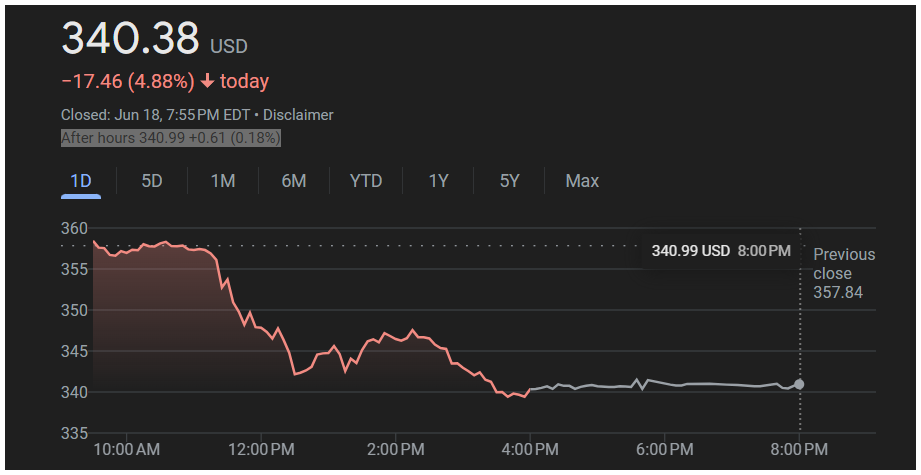On Tuesday, June 18, 2025, Visa Inc. (NYSE: V) experienced a sharp drop in its share price, closing at $340.38, down by $17.46 or -4.88% from the previous trading day. The drop came despite a relatively stable market backdrop, suggesting possible sector-specific pressures or investor reaction to broader financial trends.
Visa shares opened the session at $357.84 and struggled throughout the day, ultimately failing to hold on to any significant gains. With a trading volume of nearly 15 million shares, the stock faced increased selling pressure compared to its average daily volume. The company’s current market capitalization stands at approximately $664.93 billion.

Before the market opened on Thursday, June 19, 2025, Visa’s stock slightly recovered and was last seen trading at $340.99, up $0.61 or 0.18% in the pre-market session.
As per the latest data from Yahoo Finance, Visa’s price-to-earnings (P/E) ratio stands at 34.24, and the company’s earnings per share (EPS) for the trailing twelve months is 9.94. These metrics reflect the market’s continued confidence in Visa’s profitability and growth prospects.
Financial results for the quarter ended March 31 revealed that the company generated $9.59 billion in revenue and reported a net profit of $4.58 billion. This compares to the previous year’s quarterly results of $8.78 billion in revenue and a net profit of $4.66 billion, indicating year-over-year revenue growth despite a slight dip in net profit.
Investors are paying close attention to consumer spending trends, payment volume growth, and interest rate shifts, which heavily influence the valuation of companies in the financial services sector. Visa, being one of the world’s leading payment technology companies, is not immune to these market dynamics. A shift in consumer behavior, inflationary pressures, or tightening monetary policy could be contributing to the recent dip.
Year-to-date, Visa is still up around 22.96%, reflecting strong gains earlier in the year. However, the recent fall has slightly dented its performance and prompted analysts and traders to reassess near-term expectations.
Some analysts believe this drop may be temporary and see it as a potential buying opportunity, citing Visa’s strong fundamentals, broad global network, and consistent earnings performance. The stock’s 52-week range remains between $252.70 and $428.06, highlighting the substantial rally the stock has seen over the past year.
In recent news, Visa has been expanding its presence in digital payments and cross-border payment systems. The company is also actively exploring partnerships in the crypto and fintech space to remain at the forefront of innovation.
Looking ahead, investors will be watching for Visa’s next earnings report and any management commentary on consumer trends, macroeconomic outlook, and global transaction volumes. Until then, short-term volatility may persist, but the long-term outlook remains constructive for the company given its dominant market position and strong financials.
This article is for informational purposes only and should not be considered financial advice. Investing in stocks, cryptocurrencies, or other assets involves risks, including the potential loss of principal. Always conduct your own research or consult a qualified financial advisor before making investment decisions. The author and publisher are not responsible for any financial losses incurred from actions based on this article. While efforts have been made to ensure accuracy, economic data and market conditions can change rapidly. The author and publisher do not guarantee the completeness or accuracy of the information and are not liable for any errors or omissions. Always verify data with primary sources before making decisions.
Dawson Blake is a financial markets expert with over 10 years of experience, focusing mainly on stock market news and price movements. He aims to become a top-tier authority in curating stock news content that readers can trust as their go-to source for market information. Dawson enjoys breaking down market activity, company updates, and daily trends to help investors stay informed and make smarter financial decisions. His writing is simple, clear, and designed to make the stock market easy to follow for everyone.

